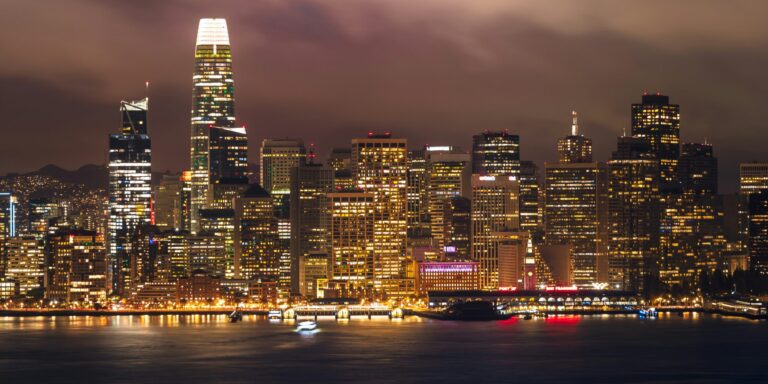On August 4, Empire Records announced an ambitious proposal to transform the rooftop of its new headquarters at the One Montgomery building into a public concert venue, aiming to reinvigorate downtown San Francisco’s cultural and economic life. The plan, if approved, would introduce live music performances, artist showcases, and curated events to the heart of the city, embracing the movement of creative placemaking as a tool for urban renewal. In doing so, Empire Records hopes to breathe fresh energy into a district long defined by finance and commerce, now increasingly marked by vacancies and post-pandemic decline.
The One Montgomery building, a landmark Italian Renaissance Revival structure originally completed in 1908, has sat largely unused for years. Once home to the First National Bank and later a Wells Fargo branch, the building’s rooftop was previously listed as a publicly accessible space under the city’s privately owned public open space (POPOS) program. However, it has remained closed off, and past owners were issued notices for failing to maintain public access. Empire’s plan would not only reopen this rooftop but reimagine it as a cultural centerpiece—complete with performances, gatherings, and community events that honor both the building’s historic architecture and the city’s evolving creative landscape.
Empire Records acquired the building in January 2025 for a reported $20 to $22.5 million, significantly less than the $82 million it fetched at the height of the market in 2019. This strategic purchase, made during a downturn in the downtown commercial real estate market, gave the label not only a permanent base in its hometown but an opportunity to shape the future of San Francisco’s music scene. Empire’s founder and CEO, Ghazi Shami, a San Francisco native and vocal advocate for local arts, has positioned the label as more than a music distributor—it is now a civic participant with a vested interest in the city’s revitalization.
The rooftop venue, as envisioned by Empire, would serve multiple functions. While the space would certainly host public concerts and live showcases by Empire artists and collaborators, it would also accommodate workshops, music industry panels, cultural festivals, and even performances by local schools and arts organizations. Empire plans to work in partnership with city leaders, neighborhood groups, and fellow cultural stakeholders to ensure the space reflects the diversity and creativity of the broader Bay Area.
This proposal arrives at a moment when downtown San Francisco is seeking ways to draw people back. Office vacancies remain historically high, and public safety and economic concerns have discouraged both businesses and pedestrians. Amid this atmosphere, city officials have embraced temporary art installations, pop-up performances, and free public concerts as ways to reintroduce vitality to the area. Empire’s rooftop project fits within this larger strategy but adds a permanent and privately funded venue to the mix—an architectural and cultural anchor at a time when many institutions have scaled back.
Empire is no stranger to urban engagement. The label has been actively organizing free concerts across the city, including large-scale events in Civic Center Plaza featuring major artists like Shaboozey and Fireboy DML, as well as performances spotlighting emerging local talent. These events have not only brought thousands of people together but have stimulated business for nearby restaurants, shops, and transit operators. By locating its latest venture on the rooftop of One Montgomery, Empire hopes to amplify this effect within a dense, transit-accessible corridor in the Financial District.
Importantly, the rooftop’s transformation will preserve and highlight the building’s historic features. The One Montgomery structure is considered one of downtown’s most impressive early 20th-century buildings, known for its marble interiors, Tuscan columns, and sculptural ornamentation. Empire’s renovation plan respects these design elements while upgrading the rooftop to meet modern safety, accessibility, and acoustic standards. The final product will be a blend of old and new—an emblem of San Francisco’s cultural past and its creative future.
If approved by planning authorities, the rooftop venue could begin hosting events as early as 2026. Empire envisions it as a space not only for music fans but for workers, residents, tourists, and artists. During the day, it may serve as a public retreat, open for casual visits or quiet breaks. In the evening, it would come alive with curated events, from intimate acoustic sets to larger, high-energy concerts. Empire’s leadership has stressed the importance of accessibility, affordability, and inclusion, pledging to work with a broad range of partners to ensure the space remains open and relevant to all San Franciscans.
The proposal signals a new model for arts infrastructure in American cities—one in which private companies take on the role of civic developers, blending commercial success with public benefit. In Empire’s case, the rooftop venue is not just a stage for performances; it is a platform for the city’s cultural resurgence. As San Francisco navigates economic uncertainty and a shifting urban identity, efforts like these may prove crucial in restoring downtown’s soul and ensuring the city remains a vibrant, creative, and liveable place for generations to come.


